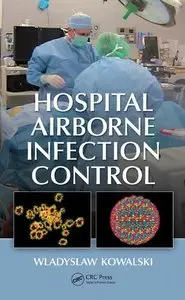Hospital Airborne Infection Control by Wladyslaw Kowalski
2011 | ISBN: 1439821968 | English | 370 Pages | PDF | 5 MB
2011 | ISBN: 1439821968 | English | 370 Pages | PDF | 5 MB
Although nosocomial, or hospital-acquired, infections have been well cataloged and are fairly well understood, traditional solutions have failed to completely eliminate the problem. Even the most modern hospitals find themselves stymied by the persistence of these pathogens in hospital wards and operating rooms. The degree to which most of these infections are airborne is not known, but a growing body of evidence indicates that airborne transmission plays a role in many hospital-acquired infections.
Addressing one of the most important topics in health care, Hospital Airborne Infection Control is the first book to deal with the control of airborne nosocomial infections in detail. It identifies all pathogens known or suspected to be airborne, along with their sources in hospital environments. It also summarizes all epidemiological evidence for airborne transmission. The text addresses respiratory, surgical site, burn wound, immunocompromised, pediatric, nursing home, and non-respiratory infections. In each category, an extensive number of examples show that inhalation is not the only airborne route by which infections may be transmitted.
Noting that airborne transmission and surface contamination are virtually inseparable, the author emphasizes that both air and surface disinfection, including hand hygiene, are important factors in controlling the transmission of airborne disease. He also proposes a variety of new solutions and technologies, including ultraviolet, ionization, ozone, plasma, and vegetative air cleaning systems. A compendium of scientific and medical information, this book helps hospitals control nosocomial infections and outbreaks spread by the airborne route as well as by direct contact and contact with fomites or contaminated equipment.



